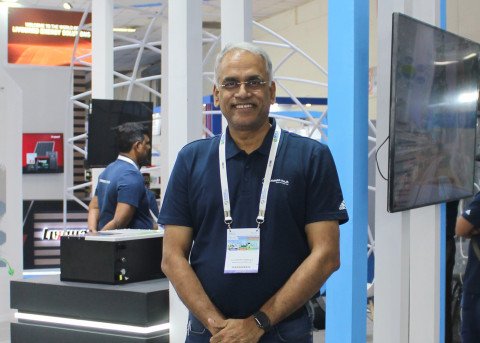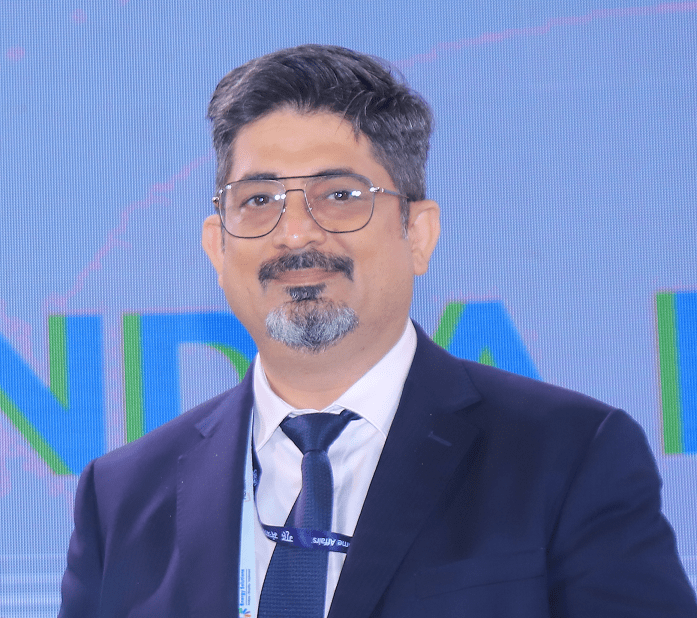The Energy Efficiency Services Limited (EESL) is at the forefront of electric vehicle adoption and ecosystem development in the country. The Government of India-backed company has put forth humongous efforts with regard to the National E-Mobility Programme for procurement of electric cars and buses for state departments and Electric Vehicles Charging Infrastructure (EVCI) for developing charging infrastructure in the country.
At the E-mobility Day conferences of IESW 2023, Vishal Kapoor, CEO of Energy Efficiency Services Limited (EESL) made his presence felt with his thought-provoking ideas and observations. ETN's Dhiyanesh Ravichandran got in touch with him for a brief, exclusive interaction at the conference on the current e-mobility trends in India.
Excerpts:
Please share your first impressions of the show IESW 2023?
This whole show, I believe is taking place at the right time. A 4-5 day show of battery in itself shows that battery has come up and it is here to stay, and it is going to be the future. It was very hard to imagine a few years back that battery would take this kind of a centerstage, and now we're seeing a lot of interest in batteries.
Any e-mobility trends that have caught your eye recently?
On the part of the electric mobility, a lot is happening across the country and we at CESL we have been at the forefront of the EV revolution in India. We started EV deployment way back in 2017 when there were no EVs in India.
We've been putting up a lot of chargers and charging infrastructure, and now, the sky is the limit. The prime mover of the transport economy is moving from ICE electric vehicles to batteries, and since transport is a 20% contributor to overall energy intensity/GHGs problem that we're facing, I think this transition brings us to a very exciting time.
A lot of knowledge co-creation is required, a lot of knowledge exchange is required, because there are still a large number of people who do not understand the change from normal ICE vehicles to EVs.
RELATED: IESW 2023: Taking a grip of emerging Technological megatrends
From outside, the car is just the same, probably more silent, but I think there are lot of misgivings/ misunderstanding in and around the electric vehicle ecosystem, so these kinds of shows help common public and industry participants in socializing and bridging the various information gaps and connecting everyone with the correct information – so I would like to complement IESA for that.
Which segments will help take e-mobility to the masses?
I believe there are three segments, one is the personal transport segment in which we are seeing it (electrification) happening.
The other one is the public transport segment, e-buses are the way forward and they are the future. There are almost 18 lakh e-buses across the country and this space needs further push and we at CESL are doing it very rigorously from our side.
RELATED: IESW 2023: Battery Swapping is viable and scalable, it's here to stay
Apart from the public mobility place, electric three-wheelers probably have not taken off that much, again because of the information gaps I talked about earlier, either with financers, institutions, the risk perceptions so on, so those things need to be worked on. We have to work out various retrofitting models also – this is about public mobility.
The third thing which is about to happen, and where we are entering in a big way is micro e-mobility, especially in the rural areas. Electric micro mobility is the way forward. E-cycles and other battery-operated vehicles and other options come with a lot of benefits such as no registration, and they are low-cost, so I believe micro mobility solutions have to come in.
I think, there is space for every single segment of e-mobility as we go forward, and what we are going to see in 1-2 years will be much different from what we have seen in the past 3-4 years of the battery revolution.

Amara Raja embracing lithium technologies, battery recycling | Interview
Read More

